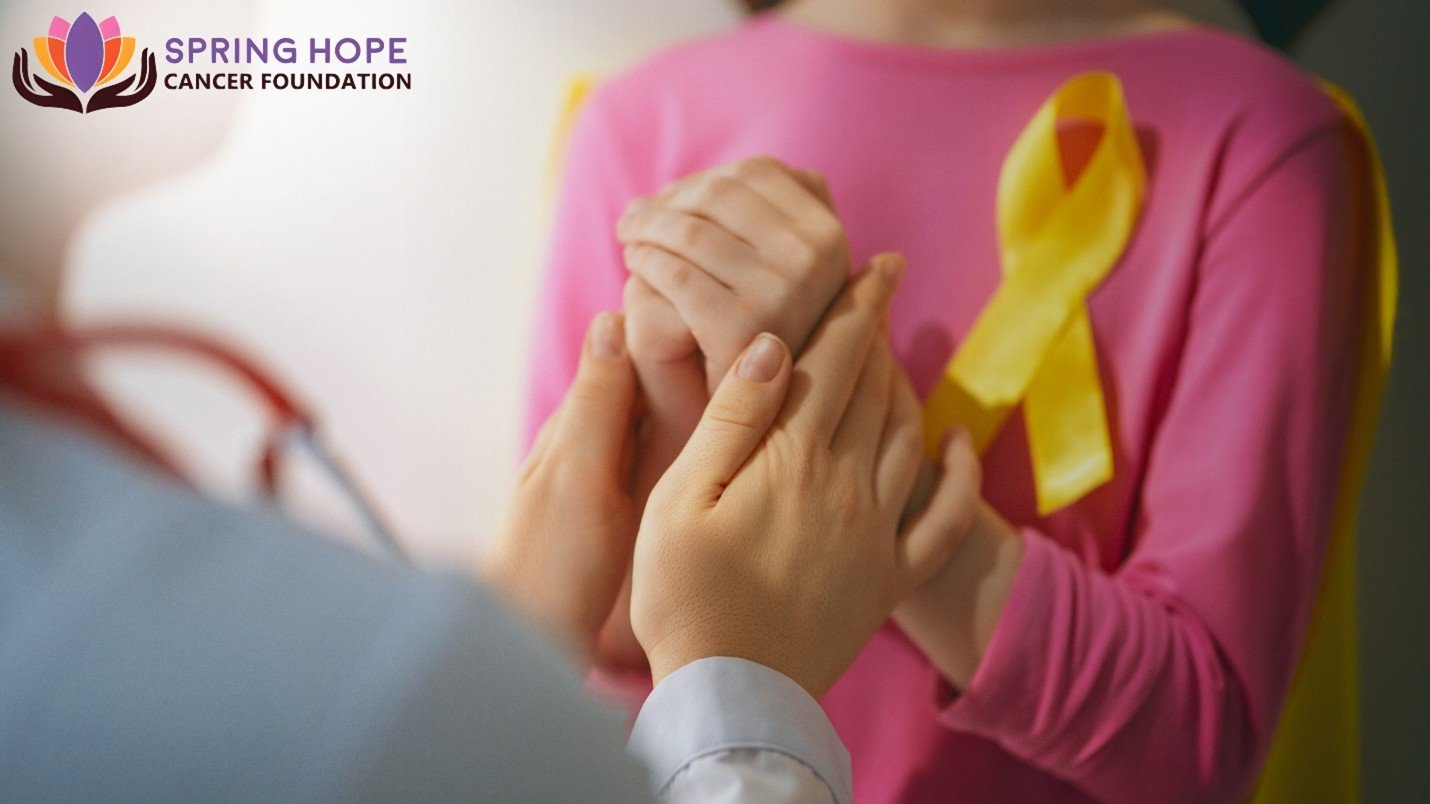
Childhood cancer is one of the most daunting challenges a family can face. Unlike adult cancers, pediatric cancers often develop suddenly without early symptoms and can progress quickly. At Springhope Cancer Foundation, we understand how vital early detection and the right treatment approach are for improving outcomes in young patients. This blog aims to spread awareness about the signs and available treatments for childhood cancers, empowering parents and caregivers to seek timely medical help.
What Are Childhood Cancers?
Childhood cancers are a group of diseases that occur in children under the age of 15. These cancers are different from adult cancers in terms of types, causes, and responses to treatment. While adult cancers are often linked to lifestyle and environmental exposures, childhood cancers typically result from DNA changes in cells that occur early in life, sometimes even before birth.
The most common types of childhood cancers include:
Each type of cancer has its own symptoms, diagnosis protocols, and treatment plans, but they all require early detection and specialized care.
Understanding the Signs and Symptoms
One of the greatest challenges in childhood cancer diagnosis is that the symptoms often resemble those of more common illnesses. However, persistent or unusual symptoms should never be ignored. Here are some key warning signs:
1. Unexplained Weight Loss: While weight loss can be common in growing children due to increased activity or changes in diet, unexplained, significant weight loss without any obvious cause may be a sign of cancer.
2. Fatigue and Pale Appearance: Persistent tiredness, paleness, and general lack of energy that doesn't improve with rest may point to leukemia or other blood-related cancers.
3. Frequent Infections or Fevers: Children with certain cancers, especially leukemia, may have weakened immune systems and become prone to frequent infections and fevers that don’t respond to usual treatments.
4. Pain in Bones or Joints: Complaints of persistent pain, especially in limbs or joints, that doesn’t seem linked to injury could be a red flag. Bone cancers often begin with limb pain.
5. Lumps or Swelling: A firm mass in the abdomen, neck, chest, pelvis, or armpits should be evaluated. While not always cancer, these swellings can be signs of neuroblastoma, Wilms tumor, or lymphomas.
6. Bruising or Bleeding Easily: Unexplained bruises or bleeding gums can be signs of leukemia, as the disease affects the blood’s ability to clot properly.
7. Vision Problems: White spots in the eye, crossed eyes, or vision loss may indicate retinoblastoma or brain tumors affecting the optic nerve.
8. Persistent Headaches or Vomiting: Frequent headaches especially those that occur in the morning or wake the child from sleep and unexplained vomiting can be signs of a brain tumor.
The Journey of Childhood Cancer Diagnosis
Once concerning symptoms are noted, the childhood cancer diagnosis process begins with a thorough medical evaluation. This often includes:
Getting an accurate diagnosis is critical because it influences the choice of treatment and the likelihood of a positive outcome. At Springhope Cancer Foundation, we advocate for comprehensive diagnostic workups done at specialized pediatric oncology centers.
Treatment Options for Childhood Cancers
Pediatric cancer treatment has come a long way in recent decades. Survival rates have improved significantly due to advances in research, clinical trials, and supportive care. The treatment plan depends on the type and stage of cancer, as well as the child’s age and overall health.
1. Chemotherapy: This is one of the most common treatments for childhood cancers. It uses drugs to kill or stop the growth of cancer cells. It may be used alone or in combination with surgery or radiation.
2. Surgery: When feasible, surgeons try to remove the tumor without affecting nearby organs or tissue. Surgery is particularly effective for solid tumors like Wilms tumor or retinoblastoma.
3. Radiation Therapy: This treatment uses high-energy beams to destroy cancer cells. It is often used when surgery isn’t possible or as a follow-up to destroy remaining cancer cells.
4. Targeted Therapy: This innovative approach uses drugs or other substances to identify and attack specific cancer cells without harming normal cells. It is especially useful in cancers with identifiable genetic mutations.
5. Immunotherapy: This treatment boosts the child’s immune system to fight cancer. It includes monoclonal antibodies, checkpoint inhibitors, and CAR T-cell therapy.
6. Bone Marrow/Stem Cell Transplant: This procedure replaces damaged bone marrow with healthy stem cells and is often used in aggressive blood cancers like leukemia.
7. Clinical Trials: Participation in clinical trials may provide access to the latest treatment options that are not yet widely available. These trials are essential for pushing the boundaries of what's possible in pediatric cancer care.
Coping with Treatment: Supporting the Child and Family
Cancer treatment is a marathon, not a sprint. It affects not just the child, but the entire family. Emotional, psychological, and social support play a vital role in recovery.
The Importance of Early Childhood Cancer Diagnosis
Early childhood cancer diagnosis is crucial for a better prognosis. Many pediatric cancers are curable if caught early. The survival rate for childhood leukemia, for instance, is now over 85% in developed countries due to early intervention and advanced treatment protocols. This underscores the importance of regular medical check-ups, awareness of symptoms, and prompt medical consultation when something seems off.
Overall Summary
Childhood cancer remains a life-altering diagnosis, but it is not without hope. Recognizing the signs early and seeking a prompt childhood cancer diagnosis can make all the difference. Through collective awareness, access to specialized treatment, and support from organizations like the Springhope Cancer Foundation, many young lives can be saved and transformed.
If you are a parent, guardian, teacher, or simply someone who cares, understanding childhood cancers and acting on warning signs early can be the key to a child’s survival. Let us all work together to spread awareness and ensure that no child faces cancer alone.
Your donations are tax exempted under
80G of the Indian Income Tax Act.
Your donation transactions are
completely safe and secure.
Newsletter